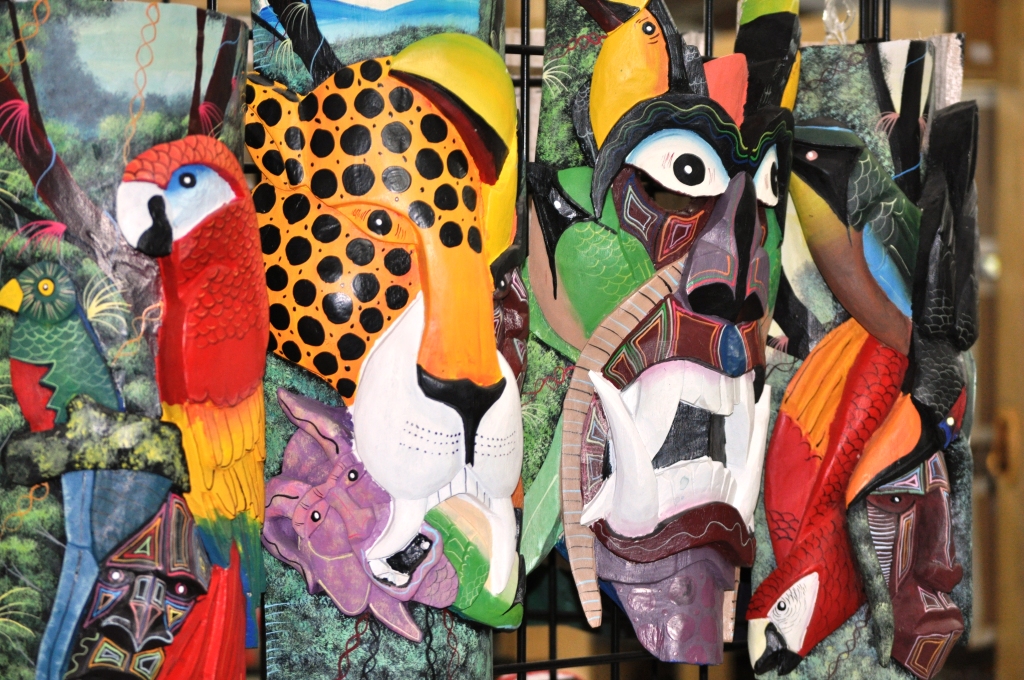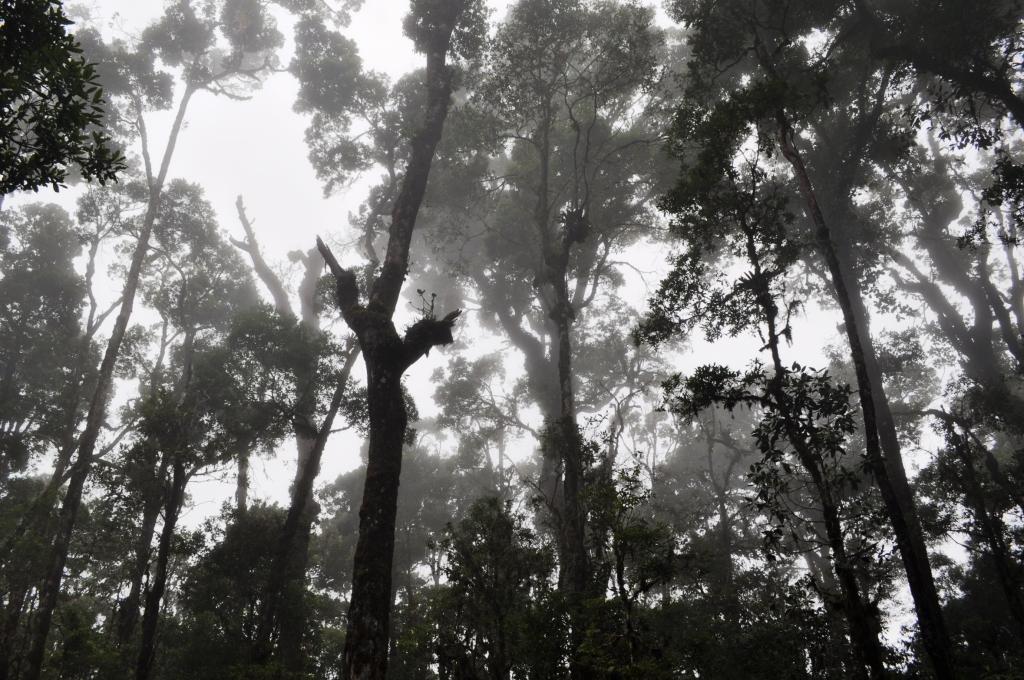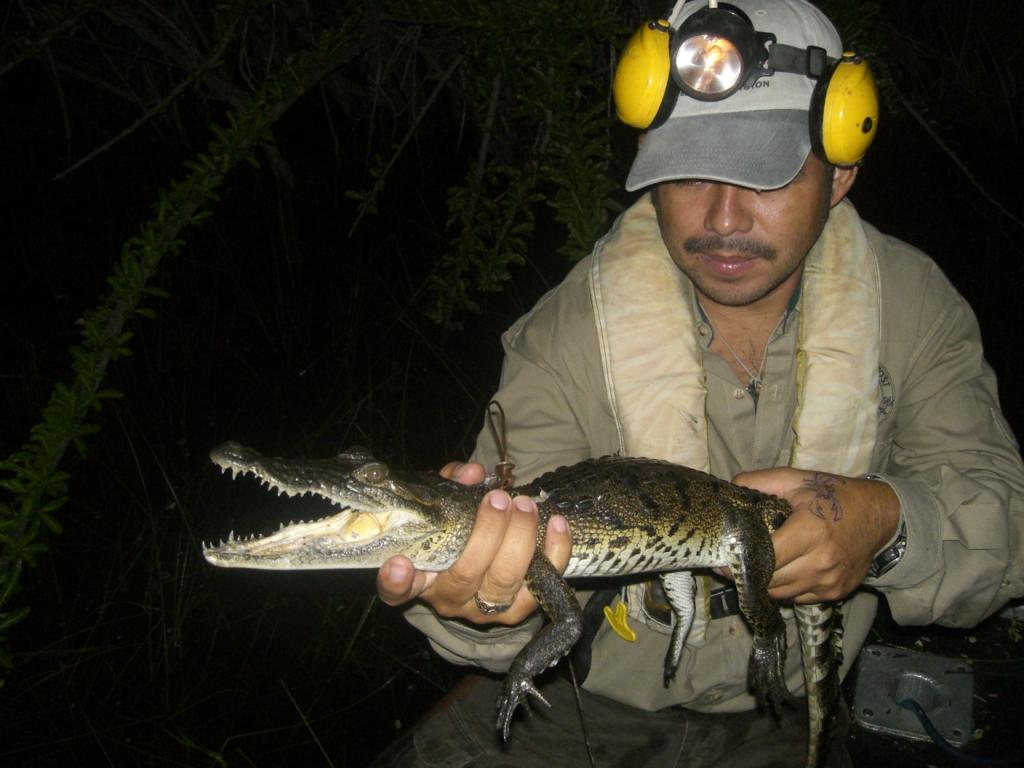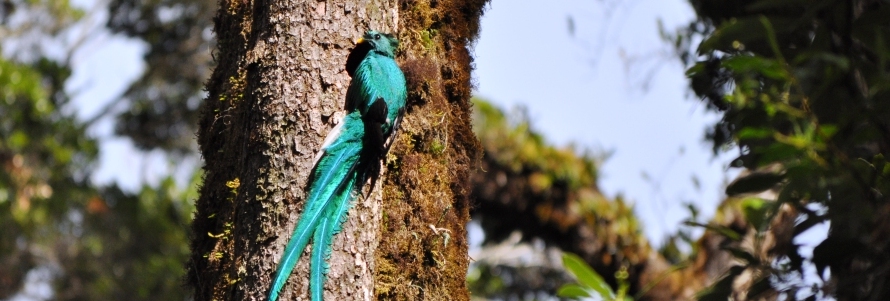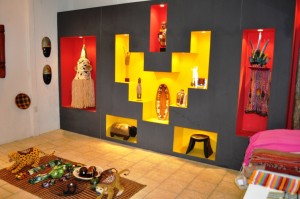
How exactly do you bring home the colors of the jewel-bright quetzal or the rainbow-hued reef fish? Or the feeling of pura vida, a sense of spirit not unlike the Hawaiian aloha.
Costa Rica is one of the world’s leading destinations for eco and adventure tourism holidays. So it seems appropriate that so many of the souvenirs are locally made, featuring traditional nature and culture themes, using sustainably produced materials. It’s a fitting way to remember a journey to this Central American country of reefs, volcanoes, beaches, and cloud forests.
In Your Bucket Because…
- Souvenirs here are reasonably priced and sometimes downtright inexpensive.
- Buying hand-made products at local markets puts money right into the pockets of local artisans and craftspeople.
- Good for: Lovers of wood work and handcrfts with authentic cultural associations.
Costa Rican Handicrafts: Carvings, Masks, and Jewelry
One of the qualities I’m always looking for in souvenirs is authenticity: a physical representation of a place, something that will help me connect years later in my memory. In this regard, Costa Rica has a unique selection of cultural mementos with particular meanings.
For example, a Wooden Oxcart. Where else has that been on your shopping list? One of Costa Rica’s most popular and unusual souvenirs is a brightly painted oxcart, a symbol of the country. Oxcarts, also called caretta, played a role in the history of Costa Rica because they were the only way coffee could be transported from the mountains to the coast. You can even buy (and have shipped home) a full-sized one, just in case you happen to own an ox that is in need of a cart. Most tourists opt for miniature reproductions. The best place to buy handmade oxcarts, along with a host of other wood crafts, is the town of Sarchi, in Alajuela Province, about an hour northwest of San Jose. The town is considered the artisan capital of Costa Rica.
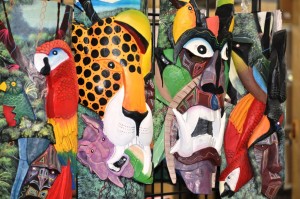
Boruca Masks: The colorful Boruca masks are indigenous, and were important in the days of Spanish colonization, when they were used in fights to repel the colonizers. Today’s masks are brightly and sometimes whimsically painted, usually featuring native animals and plants. Made of balsa or cedar, the masks can cost from $25 to well over $150, depending on size and complexity. They are found in galleries and boutique shops at good hotels, as well as in gift shops throughout the country.
Tropical Wood Carvings. Crafts made of tropical woods — beads, boxes, bookmarks, even coffee makers carved from rosewood — are available in artisan markets all over the country. Costs vary widely: That rosewood coffee maker can sell for as little as $20 or twice as much, so shop around. Most woods used in tourist products are from sustainably managed sources: Ask if you are unsure, because this is a country whose tourism industry prioritizes sustainability.
Chorotega Pottery. In the village of Guaitil, about half an hour inland from Tamarindo on Costa Rica’s northwest (Pacific) Coast, approximately 100 families are employed in pottery cooperatives. Stores attached to workshops allow tourists can see their souvenirs being crafted using clay and dye techniques that date from pre-Columbian times. Pots, plates, vases, bowls, and sculptures in the form of animals are priced between $15 and $150, meaning there’s a gift for almost everyone.
Craft Jewelry. Beaded jewelry is available in glass, semi-precious stones, seeds, shells, and wood. In more upscale stores, you’ll find silver and gold jewelry, some of it duplicating historic designs. Several markets sell wooden jewelry and re-creations of pre-Columbian gold and jade designs. (For a look at the originals, check out the San Jose’s Gold Museum.) Craft costume jewelry runs from a few dollars to $20 or so; good silver and gold pieces start at $50 and go up.
Hammocks and Fabrics
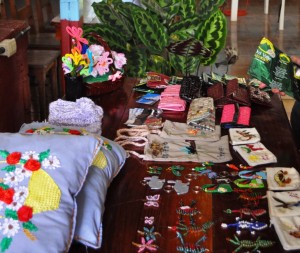
Fabric, embroidery, and cloth crafts are popular in Costa Rica and very inexpensive in small villages. Many reflect local themes: flowers, butterflies, birds other plants and animals.
Hammocks. You’ll probably spend at least part of your Costa Rican vacation sitting in a handmade hammock, and the good news is, while you have to leave the view and the jungles behind, you can take a hammock home. Several kinds are available — with and without wooden stretcher and support bars, two-person hammocks, and hanging chairs. Fabrics range from an open-weave natural cotton to tight weaves that are brightly colored with geometric patterns. Prices range from $15-$100.
Fabric. Fabric, used for shawls, tablecloths, and pillow covers, is also a colorful souvenir. Choose from geometric or animal and plant designs. Before washing, test for color-fastness; some of the dyes may run.
Salsas and Coffee: Portable Food and Drink Gifts
Salsas. Like every Central American and Caribbean country, Costa Rica has its own local sauces used on meats, fish, and rice. In addition to the usual green and red pepper sauces, try Tipica Tropical Sauce, made from mango, pineapple, passion fruit, and tamarind, or Salsa Lizano, is a rich green sauce, used on steaks.
Costa Rican Coffee. Without a doubt, Costa Rica’s most famous product is coffee. The robust java is one of the country’s best shopping bargains, and makes a great gift for a coffee-drinking housesitter or animal watcher. Coffee is available everywhere from grocery stores to fancy hotels to the well-stocked Cafe Britt stores. Prices are better at the grocery stores; the packaging is more attractive in the boutiques. Expect to spend about $3 to $6 per pound. Coffee is sold as whole bean or ground, with specialty grinds such as French Roast and espresso available. Look for shade-grown coffee. It’s a bit more expensive, but “shade grown” means that the coffee is grown in concert with other tropical plants, not as a monoculture. It may or may not be labeled “organic,” but it is a more sustainable way of growing coffee while protecting the fragile tropical soils, and it requires fewer pesticides and herbicides, if any.
Practicalities
- At some point, you’re likely to find yourself in San Jose, where the top spot for open-air souvenir shopping is the Mercado D’Artesania. It is located around the National Museum of History, located between Avenida 2 and Avenida Central. Artisans from all over Costa Rica and even other parts of Central America sell a wide variety of handmade gifts here.
- Boutique Annemarie in the lobby of the four-star Hotel Don Carlos is another well-known gift shop, with something for every type of shopper and budget, with gifts and souvenirs ranging from tee-shirts to artwork.
- And of course, there’s also the airport, which has enough shops with interesting souvenirs, including English-language guides to the flora and fauna, so you’ll be able to remember not only your Costa Rican journey, but also identify what you saw and took pictures of.
